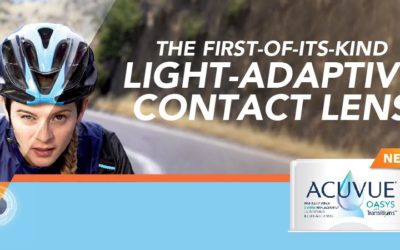The rise of myopia in the near future
Experts predict a significant spike in nearsightedness over the next 30 years
Myopia, or nearsightedness, is a condition of the eye where light focuses in front of the retina, rather than directly on its surface.
How is myopia caused?
Myopia can be caused when the cornea and/or the lens are too curved in regards to the length of the eyeball. This causes distant objects to be blurry while close objects appear normal.
Symptoms of myopia typically becomes noticeable during childhood.

Is myopia hereditary?
If both parents suffer from myopia, there is a greater risk their children will also be nearsighted. In saying that, you cannot predict who will become nearsighted by simply looking at their family tree.
As mentioned before, myopia generally begins in childhood. In most cases, myopia stabilises in early adulthood, but it can sometimes continue to progress with age.
How many people are affected by myopia globally?
In 2010, myopia affected roughly 27% of the world’s population. Three percent suffered from high myopia, a severe form of myopia in which the eyeball continues to grow and becomes very long, from front to back.
High myopia can increase the risk for retinal detachment as well as early development of cataracts and glaucoma.
According to a study conducted by Professor Padmaja Sankaridurg (University of New South Wales), myopia will affect an estimated 52% of the world’s population by 2050. Meanwhile, 10% of the population will suffer from high myopia, more than tripling from 2010.
“In 2050, approximately half of the world will have myopia prevalence.” – Padmaja Sankaridurg
So what can be done? Is there anything we can do to protect our eyes from myopia?
Does our environment factor into myopia?
Recent research conducted by Sankaridurg and other experts have found that a child’s environment can either encourage or prevent myopia from developing and progressing.
Surprisingly, the key to reducing the myopic epidemic in children is to increase exposure to outdoor light.
Parents are now advised to keep their children outside for at least an hour per day — preferably two hours — in an effort to fight off myopia.
Optometrist Scott Read, along with optometrist colleagues Dr. Stephen Vincent and Professor Michael Collins, found that outdoor light appeared to be the main protective factor in myopia development and progression.
Sunlight may be the key
Results proved that greater daily light exposure was associated with less axial eye growth over 18 months, supporting the role of light exposure in the documented association between time spent outdoors and childhood myopia.
For every 90 minutes of average daily outdoor light exposure, the child’s axial growth rate decreased by 0.12 mm/y. This in effect slowed down myopia progression.
While further research is needed to confirm these findings, it is proposed that outdoor light stimulates the production of factors in the retina which help to slow eye growth.
Slowing the progression of myopia may keep your child from developing high levels of nearsightedness that require corrective eyeglasses. It can also assist in preventing serious eye problems later in life, such as cataracts, glaucoma, or even a detached retina.
If you decide to spend more time outside, make sure you and your kids or grandchildren are protected from the sun’s UV rays.
In the meantime — even if your child is not complaining of vision problems — make sure to schedule routine eye exams for your children. Early childhood eye exams are especially important if you or your spouse suffer from myopia or if your child’s older siblings have myopia or other vision problems.
What about adults? How can myopia be corrected?
Although an outright cure for myopia has not been discovered, we can now offer a number of treatments that may be able to slow the progression of myopia.
These treatments can induce changes in the structure and focusing of the eye to reduce stress and fatigue associated with the development and progression of nearsightedness.
Currently, four types of treatment are showing promise for controlling myopia:
- Atropine eye drops
- Multifocal contact lenses
- Orthokeratology (“ortho-k”)
- Multifocal eyeglasses
If you would to discuss your options, or if you would like further information on these four treatments, please feel to email Jenny at jenny@gp-optom.co.nz to set an appointment.
Featured Posts
The latest technology in contact lenses
We trialed the brand new Acuvue Oasys’ with transitions contact lenses to see if they stand up to the test Transition glasses have been around for a while, offering an easy switch between brightness levels with the lens’s adaptation...
What you should know about macular degeneration
Being New Zealand’s leading cause of blindness, macular degeneration is a painless progression of vision loss. As an age-related eye disease, it’s most common for those over the age of 50. Like many eyesight problems, caring for your...
Address
Cnr Great South Road & Rockfield Road, Greenlane 1051
Phone
09 525 1516
Hours
Mon to Fri: 9am – 5pm
Sat to Sun: Closed
Holidays: Closed



